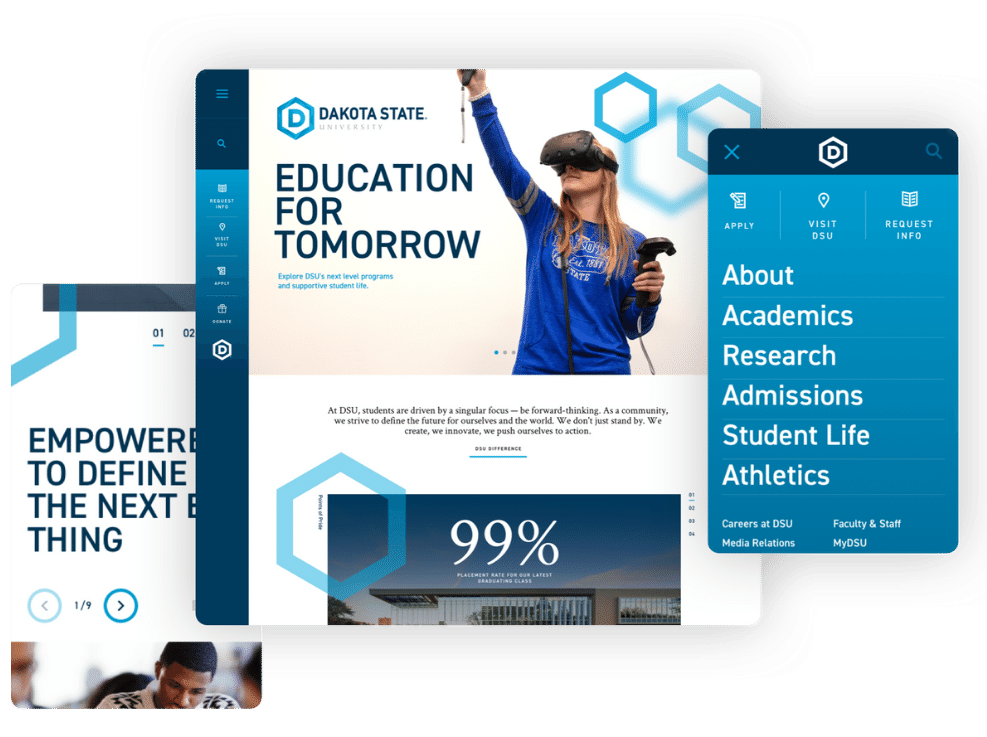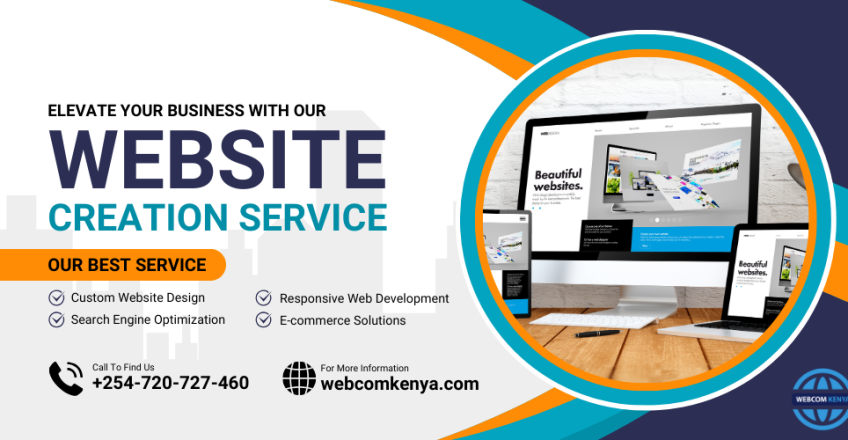How to Choose the Right Website Design for Your Business or Personal Brand
Modern Website Design That Captures Attention and Transforms
In an increasingly digital landscape, modern-day website layout has actually arised as a pivotal consider catching customer attention and driving conversions. By strategically employing aesthetic power structure, receptive layouts, and engaging interactive components, developers can develop experiences that not just bring in site visitors but also help with purposeful communications. Furthermore, efficient call-to-action strategies play an essential duty in guiding users towards desired end results. As we discover these essential components, it ends up being clear that comprehending their interaction can substantially impact an internet site's performance and user complete satisfaction. What are the crucial elements that truly make a distinction?
Value of Visual Pecking Order
Visual power structure is an essential component in web site design, as it overviews individuals' attention and improves their total experience. By purposefully organizing web content, designers can direct individuals to one of the most essential details first, thereby raising interaction and improving functionality. Effective aesthetic pecking order uses different techniques, consisting of size, spacing, shade, and contrast. Bigger aspects naturally draw the eye, while contrasting colors can emphasize key messages, making them attract attention among more controlled parts.
Incorporating a logical flow in material plan is crucial; for example, putting one of the most vital information at the top of a page fosters immediate recognition. Constant usage of typography, such as differing font dimensions and styles, helps establish a clear web content framework. This company not just aids in navigation yet likewise constructs trust fund, as customers really feel much more comfortable when they can easily locate what they are searching for.
Ultimately, a well-executed aesthetic pecking order not only boosts visual allure however likewise dramatically impacts user actions. By prioritizing vital aspects and making certain a smooth experience, developers can successfully transform site visitors right into customers, strengthening the importance of this foundational style principle in modern-day website advancement.
Responsive Style for All Gadgets
Developing a seamless experience across various tools is vital in today's digital landscape, where individuals gain access to web sites from tablets, desktops, and smart devices alike. Responsive style is a vital method that guarantees web sites adjust fluidly to different screen sizes, alignments, and resolutions. By using flexible grids, pictures, and CSS media questions, developers can create formats that maintain visual stability and capability, no matter of the gadget being utilized.
The importance of responsive design extends past appearances; it directly affects customer interaction and conversion rates. A site that operates well on all tools motivates longer gos to and minimizes bounce rates, as users are much more likely to connect with web content that is simple to navigate. Search engines, particularly Google, prioritize mobile-friendly sites in their positions, making receptive layout an important part of search engine optimization (SEO)
Integrating receptive design not just enhances user experience however also streamlines the growth process. By producing a single site that works across tools, businesses can conserve time and sources contrasted to developing different mobile and desktop versions. Eventually, receptive design is a fundamental method for modern site layout, ensuring access and satisfaction for all customers, no matter their tool.
Involving Interactive Aspects
While a receptive style lays the groundwork for a functional web site, incorporating engaging interactive elements is important for catching customer interest and fostering much deeper connections. Website Design. Interactive components, such as computer animations, tests, and clickable infographics, create a much more dynamic individual experience, encouraging visitors to spend even more time on the website
Incorporating interactive features can also direct individuals through complex info, making it simpler to digest web content. For example, interactive sliders can show item variations, while embedded video clips can give presentations or endorsements that reverberate more than static photos or text. Furthermore, gamification methods, like incentives for engaging or finishing jobs with web content, can boost user inspiration and retention.
Efficient use interactive components not just enhances the user experience yet can additionally bring about higher conversion prices. By making communications enjoyable and insightful, businesses can grow a sense of loyalty and count on with their audience. It is essential to stabilize interactivity with efficiency; extremely complex attributes might hinder site speed, adversely impacting individual satisfaction. Inevitably, integrating well-designed interactive aspects can considerably raise a site's efficiency, driving interaction and conversions in today's competitive electronic landscape.
Streamlined Navigating Practices
Effective navigation is a keystone of any type of effective site, as it directly affects individual experience and material accessibility. Streamlined navigating methods make sure that users can conveniently locate details, boosting their communication with the site. A well-structured navigation food selection must be simple and intuitive, usually featuring a restricted number of main categories to prevent overwhelming site visitors.
To achieve structured navigation, developers must prioritize an ordered structure that practically arranges content. Carrying out breadcrumb tracks can give users with context regarding their present location within the site, permitting smooth backtracking. Additionally, click for source utilizing drop-down food selections can efficiently save room while still providing access to subcategories.
Responsive design is critical, site as navigating ought to be practical across all gadgets (Website Design). Mobile users, in certain, advantage from touch-friendly menus and retractable areas that keep use without jeopardizing aesthetic appeals

Efficient Call-to-Action Techniques
A well-crafted call-to-action (CTA) is necessary for assisting users towards preferred results on an internet site, as it encourages them to involve with content or purchase. To maximize their effectiveness, CTAs ought to be clear, engaging, and strategically put throughout the website.
First, utilize action-oriented language that connects necessity or worth, such as "Start," "Join Currently," or "Insurance claim Your Discount." This language not only encourages users but likewise sets clear assumptions concerning the following steps.
2nd, think about layout aspects; CTAs need to stand out aesthetically via contrasting colors, ample whitespace, and noticeable positioning. A button that is simple to see and click increases the probability of user communication.
In addition, individualizing CTAs based on customer actions or demographics can substantially enhance engagement. Customized messages resonate more with individuals, driving higher conversion rates.

Verdict
Finally, modern website design emphasizes the combination of visual power structure, receptive designs, engaging interactive components, structured navigating, and efficient call-to-action strategies. These parts collectively boost customer experience, making certain that visitors stay engaged and encouraged to explore material additionally. By prioritizing these style principles, companies can dramatically improve customer retention and conversion prices, inevitably resulting in greater success in the electronic landscape. The constant advancement of internet layout underscores its vital role in effective on-line communication and advertising.
In a progressively digital landscape, modern internet site design has actually emerged as a pivotal element in catching customer focus and driving conversions.Aesthetic pecking order is a critical component in web site layout, as it guides users' attention and boosts their total experience.The significance of receptive layout prolongs beyond looks; it straight influences customer involvement and conversion rates.Integrating receptive layout not only improves customer experience but likewise enhances the growth procedure. Eventually, responsive design is a fundamental approach for modern-day website layout, making certain ease of access and contentment for all users, no matter of their tool.